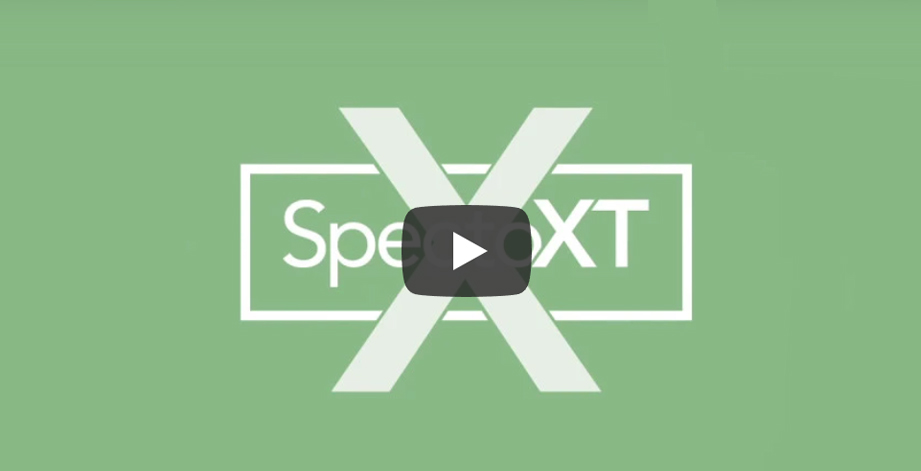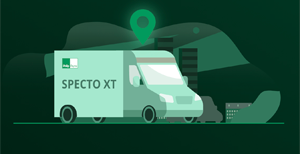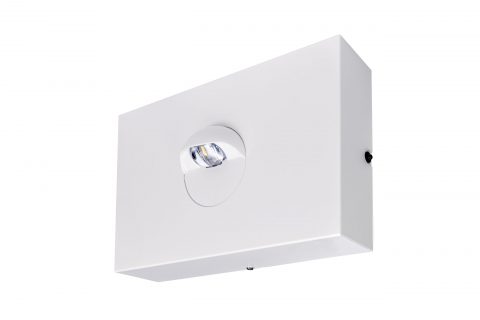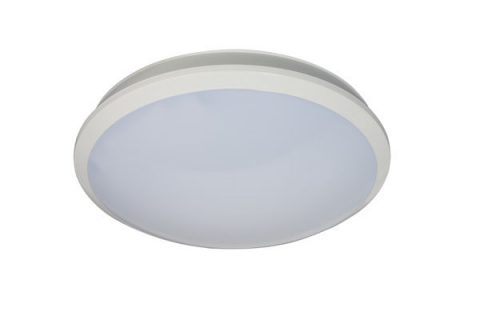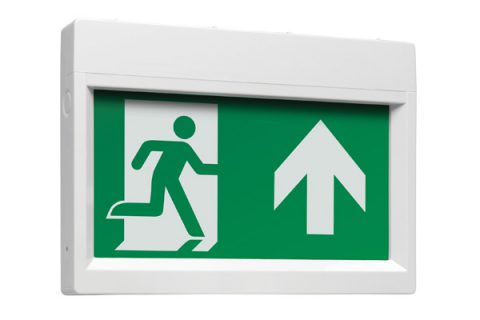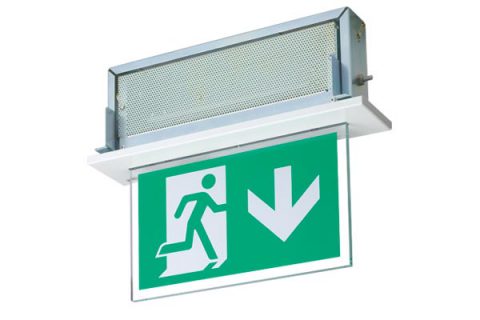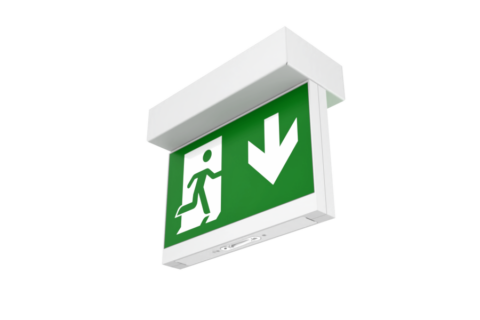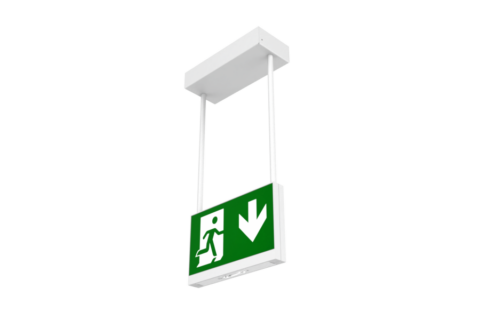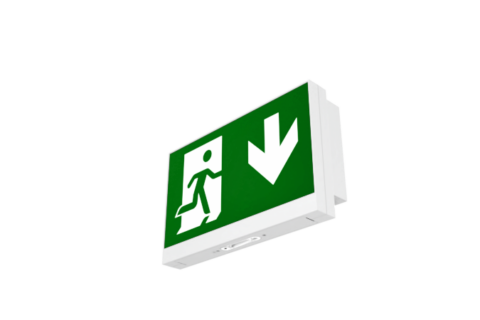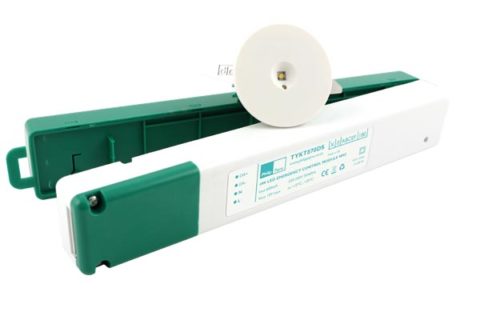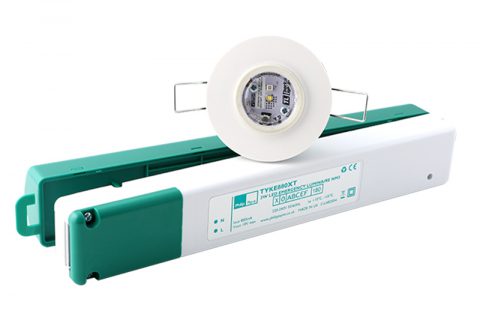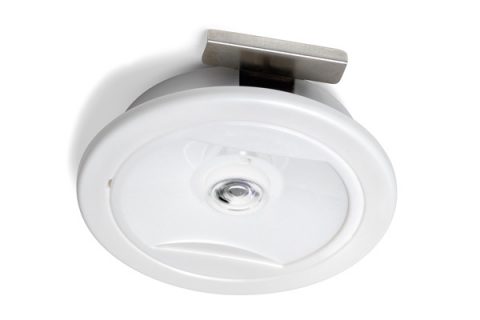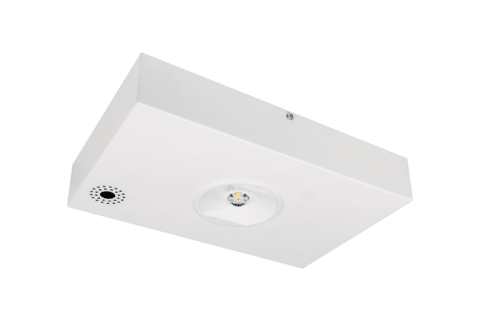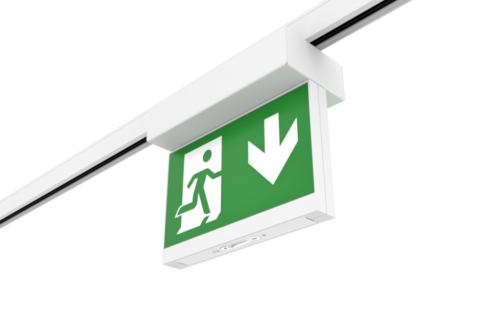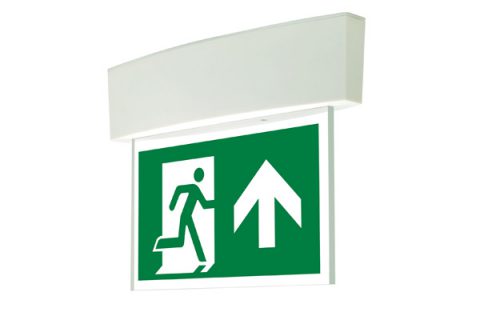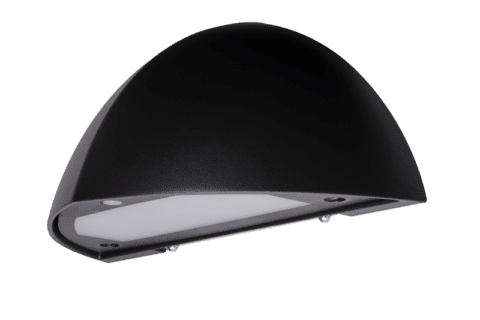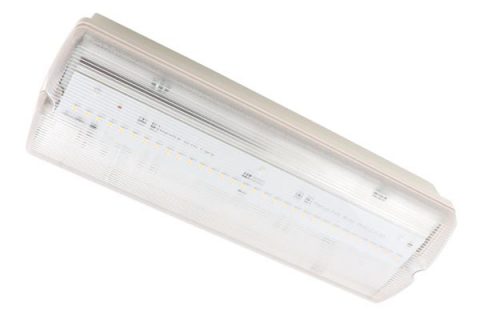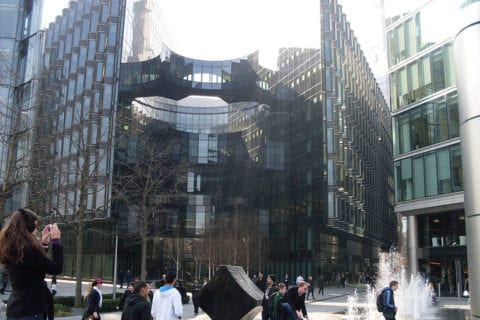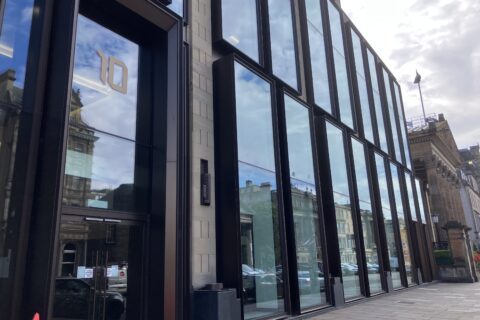Emergency lighting is a fundamental safety requirement for commercial premises. The minimum requirements are:
- 1 lux down the centreline of corridors used as escape routes
- 0.5 lux in open spaces >60 m.
- Exit routes should be clearly identified with exit signs
- Each tread on stairs should be clearly illuminated.
- Fire-fighting equipment should be lit to a minimum of 5 lux.
BS5266-1 recommends that a minimum of two luminaires, or one luminaire and an exit sign with a useable downward element, should be fitted in every section of an escape route.
The emergency lighting design must take into account the following:
- Escape route signs
- Stairs so that each flight receives direct light
- Changes in floor level
- Changes of escape route direction
- Corridor intersections
- First aid posts
- Fire alarm call points or pieces of fire fighting equipment
- Outside the final exit door and to a place of safety
- Moving stairways and walkways
- Toilet facilities exceeding 8m² or any multiple closet facility without borrowed light
- Toilet facilities for disabled use
- Motor generator, control and plant rooms
- Manual release controls for electronically locked doors
- Escape equipment for disabled people
- Refuges and call points, including disabled toilet call positions
- All other areas as deemed by the Risk Assessment
Click lighting area to view products
Stairwell
Exit Signs
Office
Exit Signs
Corridor & Lift Lobby
Luminaires
Exit Signs
Reception
Exit Signs
Final Exit
Luminaires
Wireless Testing
Under the Regulatory Reform (Fire Safety) Order failure to provide a compliant system and failure to regularly test and maintain it can result in prosecution for the employer or building owner who may face fines and imprisonment if convicted. Manual testing of emergency luminaires can be a long and arduous process, which can be open to error. Legally, as required by BS EN 50172, each luminaire must complete a function testonce a month and a full three-hour duration test once a year. Performing this process manually requires the engineer to be present to ensure that the luminaire stays lit for the duration of the tests, a time consuming and costly process, especially on large sites.
Self-testing luminaires remove this need and, in its simplest form, the basic requirement is to observe the status indicator to see if the luminaire has failed a test.
BS EN 62034:2012 is the European Standard for Automatic Test Systems for Battery Powered Emergency Escape Lighting. One of the main requirements is that the device must be self-monitoring and that it checks all tests are being performed at specified intervals.
SPECTO-XT.
A Philip Payne Specto-XT emergency luminaire will automatically test itself to the specified schedule, and constantly monitor its own performance. Test regimes and other user-defined parameters can be programmed via the website and downloaded to the Gateway.
The web portal retains historic records (determined by local standards) which are displayed in graphical form. These records, together with site documentation, are easily accessible by client authorised users
Legislation, Standards and Guidance Documents include:
- Regulatory Reform (Fire Safety) Order 2005
- Building Regulations Approved Document B 2010
- BS EN 1838:2013
- BS EN 50172:2004
- BS 5266-1:2016
- BS EN 62034:2012
- BS 5499-4:2013
- BS ISO 7010:2012+A7:2017
- SLL Lighting Guide 12 (LG12)

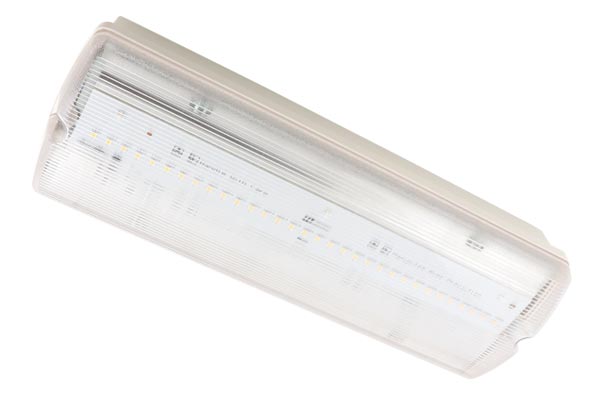
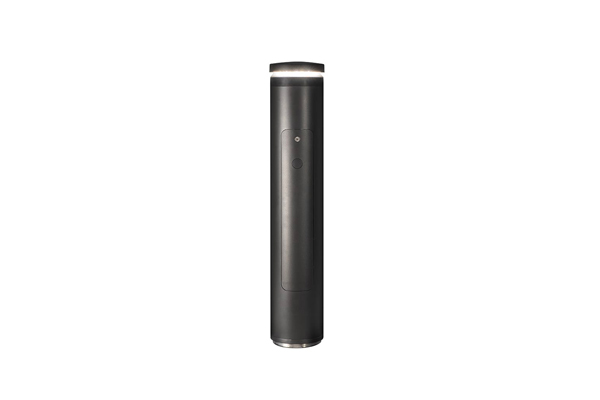
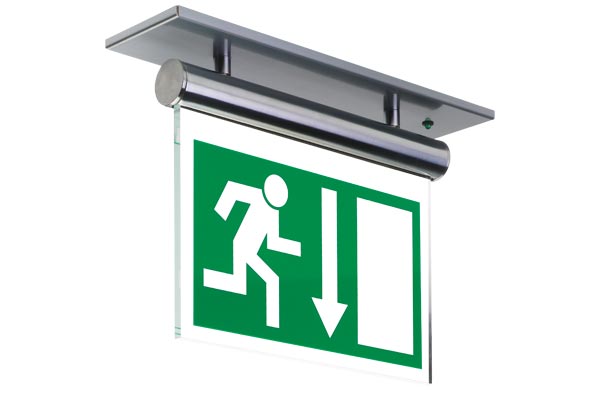

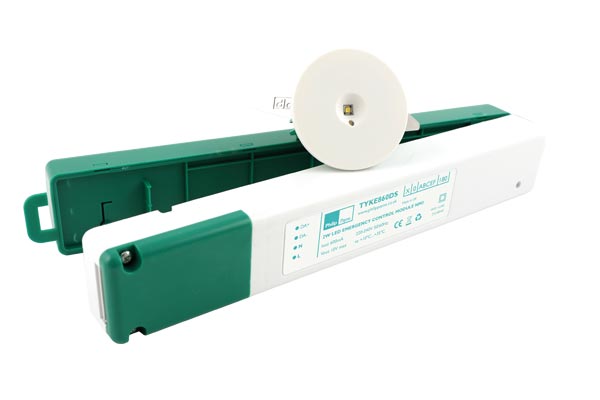
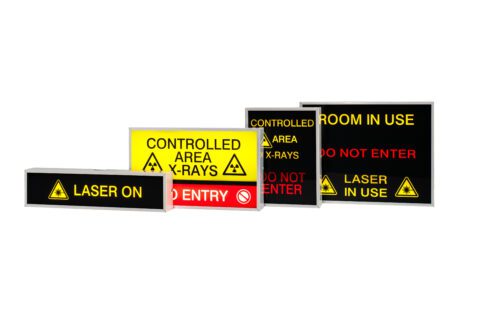

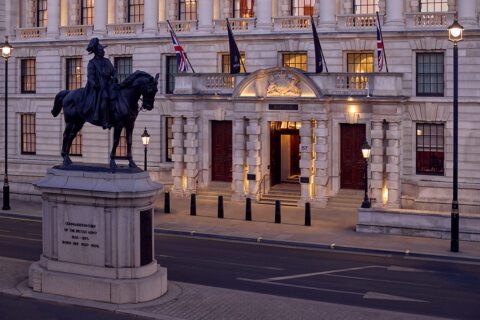
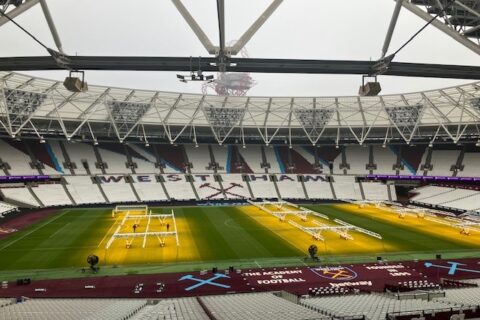
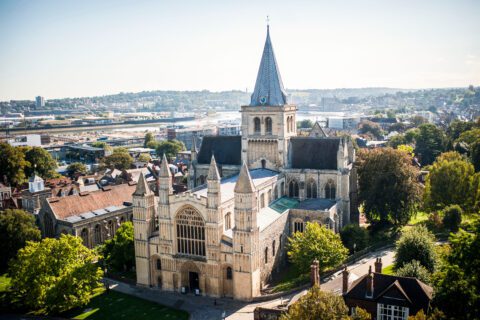
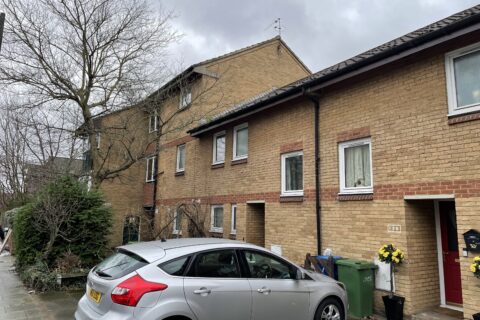
 SUSTAINABILITY
SUSTAINABILITY
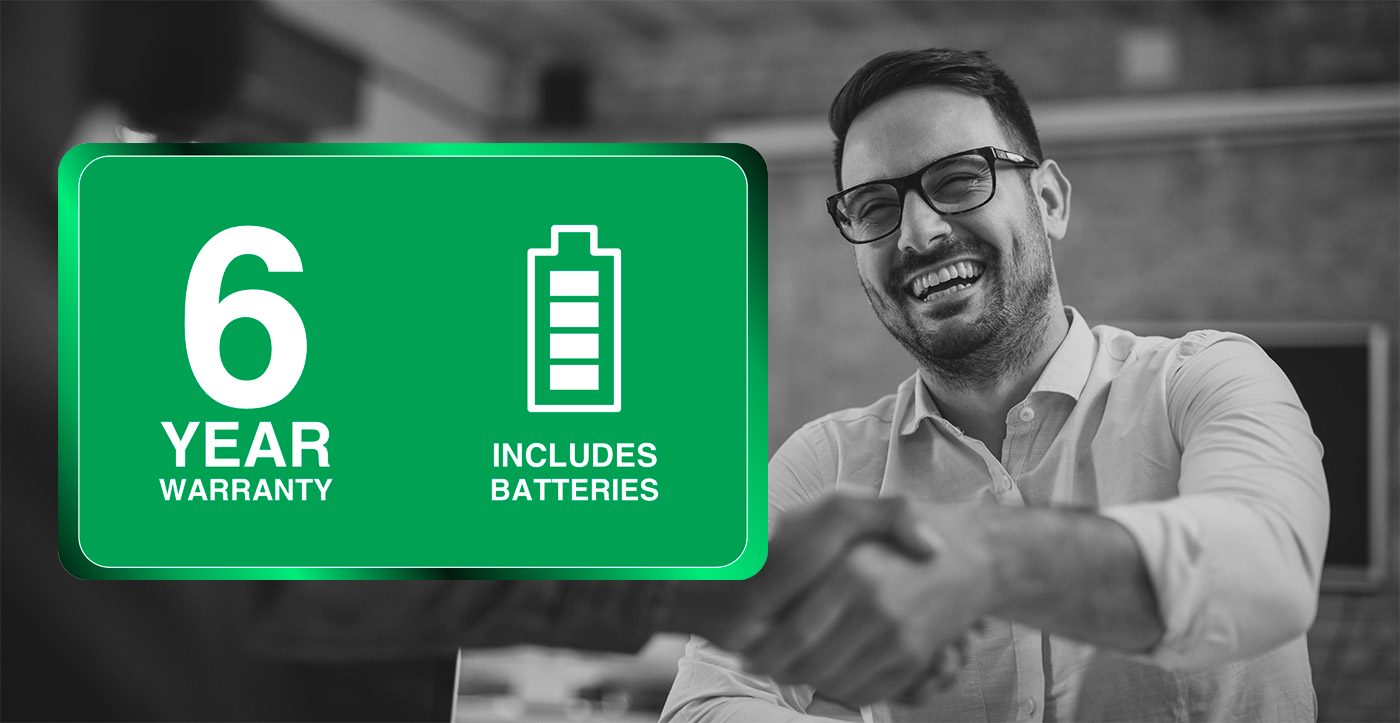 WARRANTY
WARRANTY
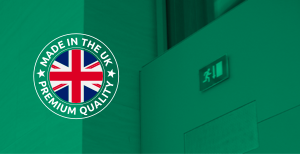 WHY USE...
WHY USE...
 NEWS
NEWS




